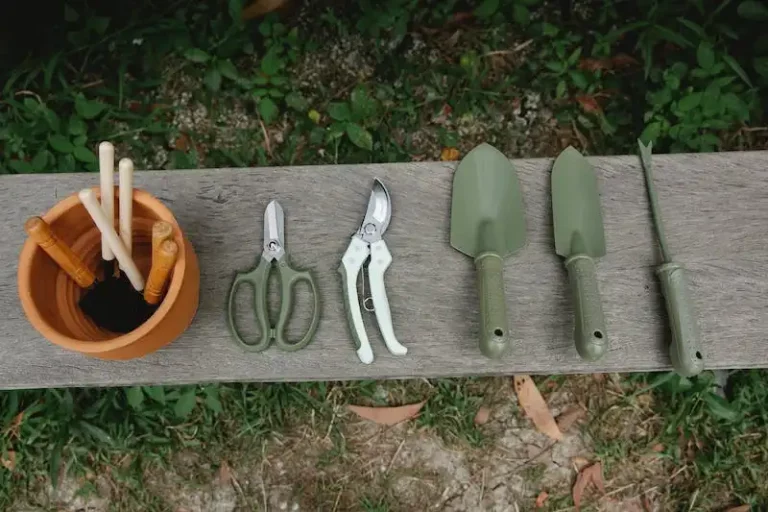When it comes to growing vine crops, such as cucumbers, watermelons, and grapes, there are several factors that can affect the fruiting process. One of the primary reasons is the weather. Vine crops thrive in warm and sunny climates, so if the temperature drops too low or if there is not enough sunlight, it can hinder the fruiting process. Another important factor is the location or place where the crops are planted. Proper soil quality and drainage, as well as adequate spacing, are crucial for healthy fruit development.
Furthermore, the health of the plants themselves plays a significant role in fruit production. Just like any other plant, vine crops need to be free from pests and diseases in order to produce high-quality fruits. Additionally, some vine species require specific pollinators to ensure successful fruit formation. For example, kiwifruit and passionfruit rely on bees for pollination, while tomatoes and cucumbers can self-pollinate.
Proper care and maintenance are also essential for encouraging fruitful growth. Regular watering and fertilizing, as well as adequate pruning and training, can significantly improve the fruiting of vine crops. Moreover, certain vines, such as grapevines and hops, require a sturdy support structure to climb on. Trellises, fences, or even specially designed support systems can be used to help the vines reach their full potential.
Lastly, the specific variety of vine crop being grown can affect fruit production. Different varieties may have different growth habits, fruiting times, and nutrient requirements, so it is important to choose a variety that is suitable for your climate and gardening conditions. Some varieties, like the dwarf or mini-fruits, are specifically bred to be compact and high-yielding, making them a great choice for small gardens or container gardening.
Vines Climbing Fruit
Vines that climb and bear fruit include a variety of plant species such as melothria, kiwifruit, cantalupensis, passionfruit, dragonfruit, watermelons, honeydew, and raspberry. These plants typically require a trellis or other vertical support system to grow properly and produce a good fruiting harvest.
Some vines, like melothria or “mouse melons,” are tiny and less well-known, but still offer great edible fruits. Others, such as kiwifruit and raspberry, are more common and have a wide range of varieties. Each year, these plants will produce new growth that needs support as it climbs and blooms.
In order to have a good fruiting yield, vines often require proper pollination. Some, like cantalupensis melons, have separate male and female blossoms that need pollination from bees or other insects. In other words, both male and female flowering plants need to be present and in proximity to each other for successful fruiting.
For climbing vines, a trellis or support system is essential. This can be as simple as a wooden stake or as complex as a multi-tiered structure. The support system helps prevent the vines and fruits from becoming entangled on the ground, which can lead to poor fruit development. It also allows for better air circulation around the plant, reducing the risk of diseases and pests.
Some vine species, like cucumbers and squash, have particularly hardy and vigorous growth habits. They can easily cover a trellis or support system and provide a great visual display along with their fruiting. Other vines, such as passionfruit or kiwifruit, may only need a trellis for some additional support.
When choosing a trellis or support system, consider the specific needs of your vine crop. Some plants, like dragonfruit or melothria, require a trellis that can support their weight and allow the fruits to hang freely. Others, like watermelons or honeydew, benefit from a strong trellis system that can support the weight of the fruits as they grow.
In addition to proper support, vine crops also require care and attention to ensure their health and productivity. Regular watering, fertilizing, and pruning are important tasks to keep the plants in good condition and encourage fruiting. It’s also important to consider the specific weather conditions in your area and choose vine crops that are well-suited to the climate.
In conclusion, growing vines that climb and bear fruit can be a rewarding experience. Whether you choose a common type like blueberry or a less common variety like uva-crispa (kiwifruit), the foliage and fruiting can add beauty and flavor to your garden. With proper support, care, and attention, these plants can thrive and provide a bountiful harvest year after year.
Reasons for Poor Fruiting of Vine Crops
Vine crops, such as cucumbers, watermelons, and squash, are usually easy to grow in home gardens. However, there are times when these plants fail to produce an abundant harvest. Understanding the reasons for poor fruiting can help gardeners troubleshoot and improve their crops.
One common reason for poor fruiting is improper pollination. Vine crops, including cucumbers and melons, require bees or other pollinators to transfer pollen from the male flowers to the female flowers. If there is a lack of pollinators in the garden, or if weather conditions, such as rain or excessively high temperatures, prevent pollinator activity, poor fruit set may occur. In such cases, hand-pollinating the plants using a small brush or Q-tip can be a solution.
Poor fruiting can also be caused by inadequate sunlight. Vine crops thrive in full sun, so planting them in a location where they will receive at least 6 hours of direct sunlight each day is essential. Lack of sunlight can lead to weak plants and poor fruit development.
Another factor to consider is the variety of vine crop being grown. Some varieties have better disease resistance or fruit setting abilities than others. For example, certain grapevine varieties, such as Vitis vinifera, may have difficulty fruiting in certain climates or growing conditions. Researching and selecting varieties that are well-suited to your specific growing conditions can greatly improve fruiting success.
Poor fruiting can also occur if the soil is not well-drained. Vine crops prefer moist, but not waterlogged, soil. Poorly drained soil can lead to root rot and other diseases that can hinder fruit production. Amending the soil with organic matter and ensuring proper drainage can help alleviate this issue.
Pests and diseases can also be a factor in poor fruiting. A variety of pests, such as deer, mice, and thorny critters like rabies, can damage vines and prevent proper fruit development. Additionally, diseases like powdery mildew or fungal infections can affect the health and productivity of vine crops. Implementing appropriate pest control measures and practicing good gardening hygiene is important to mitigate potential damage.
Frost and cold temperatures can also impact fruiting. Vine crops are typically warm-season plants and are sensitive to frost. Planting too early or experiencing late frost can damage blossoms and young fruits, resulting in poor fruiting. Protecting the plants with row covers or providing some form of frost protection can help prevent frost damage and improve fruiting.
Finally, poor fruiting can result from inadequate water and nutrient levels. Vine crops have high water requirements, especially during fruit development. Inconsistent watering or lack of nutrients can cause stunted growth and poor fruit set. Ensuring vines receive regular watering and providing adequate nutrients through fertilization can improve fruiting success.
In conclusion, there are several reasons for poor fruiting of vine crops. These include improper pollination, inadequate sunlight, inappropriate variety selection, poorly drained soil, pests and diseases, frost, and inadequate water and nutrient levels. By addressing these factors and making appropriate adjustments, gardeners can increase their chances of a bountiful and successful harvest of vine crops.
Flowering Habit
Grapevines have a unique flowering habit that influences their fruiting. The flowers on grapevines are not self-pollinating, which means they rely on external sources, such as wind or insects, to transfer pollen from the male to the female flowers. This can result in poor fruit set if there is a lack of pollinators or if the weather conditions are not favorable for pollination.
Some vine crops, like passionfruit (Passiflora), have flowers that are adapted to attract specific pollinators, such as bees. The flowers of some passionfruit varieties have a sweet scent, often described as ‘honey-like,’ that attracts bees and other pollinators. Other vine crops, such as cucumbers (Cucumis sativus), have separate male and female flowers on the same plant. This means that pollination must occur between flowers on different plants in order for fruit to form.
In addition to their unique flowering habits, different vine crops have different fruiting habits. For example, grapevines produce clusters of berries, while melons (Cucumis melo) produce large single fruits. Some vine crops, like watermelons, have larger fruit size but fewer fruits per plant, while others, like strawberries (Fragaria), produce many smaller fruits per plant. The fruiting habit of a vine crop can also be influenced by environmental factors, such as temperature and sunlight.
To ensure good fruit set and production, it is important to provide the necessary conditions for proper pollination. This includes providing a variety of flowers that attract pollinators, ensuring a healthy population of pollinators in the area, and creating a suitable environment for pollinator activity. This can involve planting companion plants that attract pollinators, maintaining a diverse garden with a range of flowering plants, and providing appropriate nesting places for bees and other pollinators.
Furthermore, ensuring proper care and management of vine crops is essential for maximizing fruiting. This includes providing proper spacing, staking or trellising the plants to support their growth, and providing adequate water, nutrients, and sunlight. Some vine crops, like kiwifruit (Actinidia deliciosa) and blackberries (Rubus), require regular pruning and training to maintain their shape and productivity. Proper care and management can help optimize the flowering and fruiting process of vine crops.
In conclusion, understanding the flowering habit and fruiting habits of vine crops is crucial for diagnosing and addressing poor fruiting issues. By considering the unique characteristics and requirements of different vine crop types, and providing appropriate care and management, gardeners can improve fruit set and maximize the production of vine crops.




